Are you looking for the best places to visit in Europe in January?
The festive season may be over in many countries, but that doesn’t mean that these European destinations aren’t worth visiting.
In fact, pro travellers know that January in Europe has a lot to offer; whether they’re seeking mild temperatures in the south, skiing in the mountains or the northern lights in the north.
Some European winter destinations hold onto the festive period for a little bit longer, with celebrations like Spain’s Three King’s Day and Orthodox Christmas taking place at the start of January.
As an avid winter traveller, I’ve visited places all over Europe in January – you can see my entries for Lisbon, Cappadocia and Reykjavik in this article – but I also asked some expert travel bloggers to contribute their favourite places on the continent in the first month of the year.
So, if your New Year’s destination was to travel more, consider a winter trip to any of these Europe January destinations!
This blog post may contain affiliate links
Best places to visit in Europe in January for winter sun
Warm weather? In January?
While none of Europe is hot in the winter months, there are certainly some spots where you can enjoy mild conditions.
In these destinations, winter days reach daytime temperatures of around 17C – maybe even touching 20 on the warmest days.
So if you’re gazing at the rain or snow falling in London, New York or Amsterdam and want a dose of sunshine, check out these warm January places to visit in Europe!
Malaga, Spain
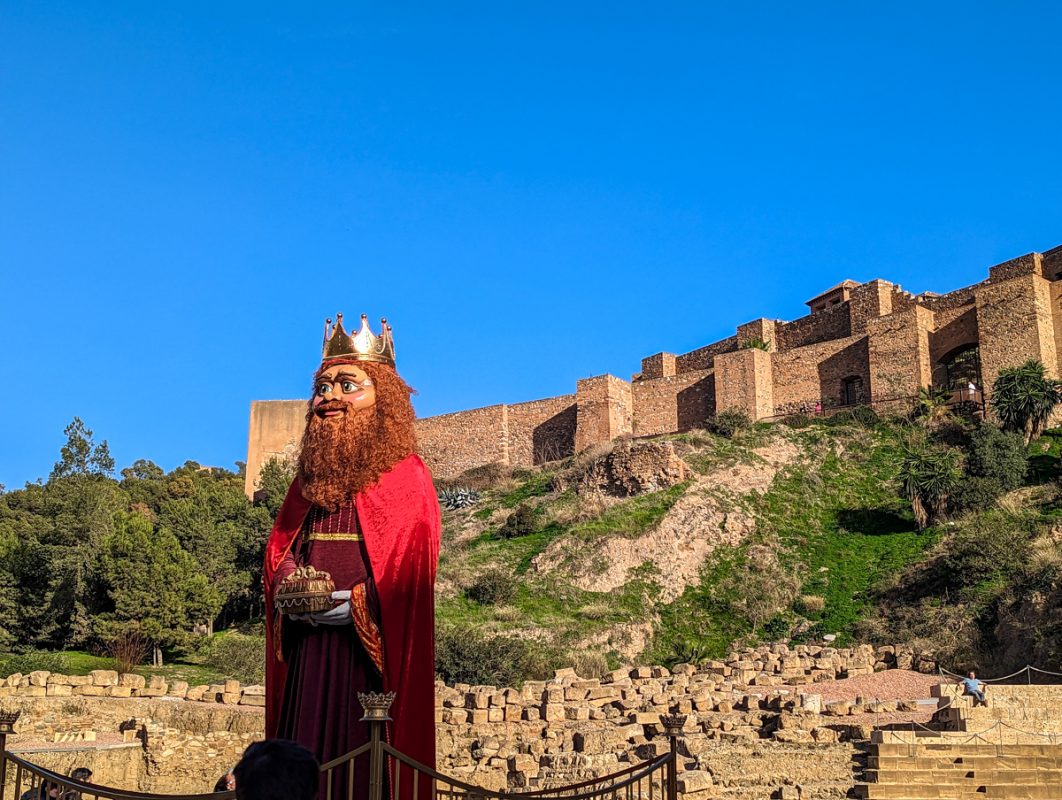
If you are looking for a winter sun holiday in Spain, Malaga is an excellent choice.
It’s one of the best places to enjoy mild and sunny winter, with temperatures of 17°C/ 62.6°F during the day – sometimes it dips a bit lower than this, but it almost never gets to freezing (snow in Malaga is virtually unheard of).
You can discover Malaga’s main attractions, like Malaga Cathedral and Gibralfaro Castle, and go on scenic hikes throughout the month.
However, if you love all Christmas-related things, you must visit Malaga at the beginning of January.
Christmas doesn’t end until the 7th of January, so you can still see the impressive Christmas light decorations, go to the Christmas markets and attend the famous Three Kings Parade on the 5th of January.
The latter is a fantastic event to attend, especially with small kids.
If you aren’t into Christmas, head to Malaga in the middle of the month to find better flight and accommodation deals.
You’ll also experience fewer crowds, both in the city and on the Costa del Sol.
By Cristina from My Little World of Travelling
Peloponnese Peninsula, Greece
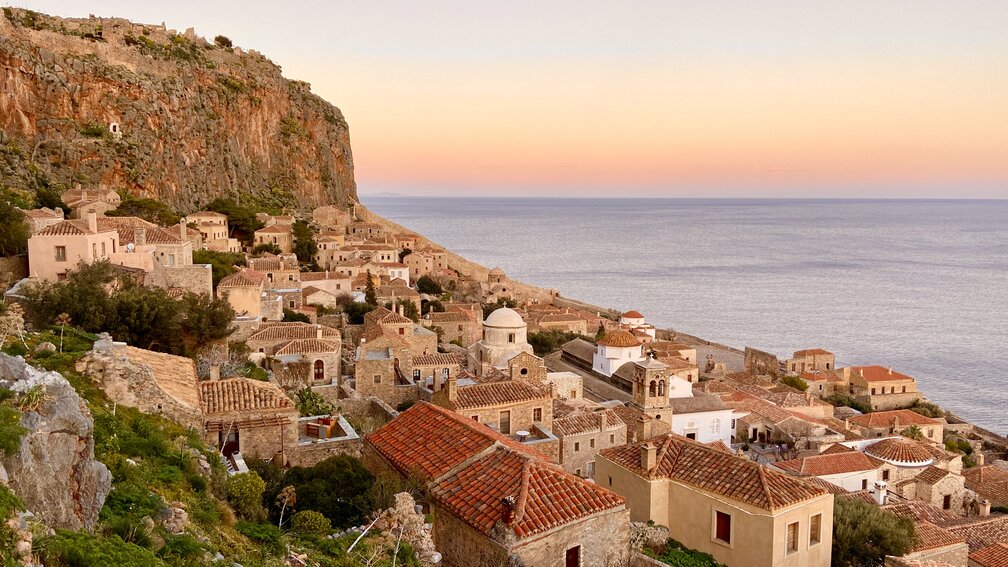
If you want to forget that it’s winter in Europe, look no further than Greece’s Peloponnese Peninsula.
The Peloponnese Peninsula is at the southern tip of mainland Greece and is known for its abundant ancient archaeological sites.
The pristine location of the Peloponnese on the Mediterranean leads to mild, sunny winters.
With average January high temperatures ranging from about 15-16°C (59-61°F) along the coast, a swim in the sea along the Peloponnese is not unheard of!
The Peloponnese features some of the most famous historical sites in the world, including Olympia, Mycenae, Epidaurus, Messene, Mystras, Sparta, and Acrocorinth.
In January these sites are basically empty due to the lack of other tourists and they’re also half-price to enter (off-season prices).
The Peloponnese is also known for gorgeous beaches and dramatic mountains, but in January it might be tough to do Alpine hikes and lay on the beach.
You can, however, enjoy some of the charming villages without the hoards of other tourists!
Most restaurants will be closed, but more local joints remain open.
Be sure to check out the coastal village of Limeni and the charming medieval city of Monemvasia.
In the city of Nafplio, things will be livelier, as people actually live there, and there are endless ancient fortresses to explore.
By Chris from Around the World With Me
Paphos, Cyprus

Paphos is one of the best places to visit in Europe in January.
This coastal city is located in the southwestern part of Cyprus and is known for its very rich history.
Over the centuries, various civilizations like the Greeks, Romans, Turks, and even the British have made left their marks in this place.
The old part of Paphos has been a European UNESCO World Heritage Site for 40 years now, thanks to its exciting and important history.
Paphos has lots of attractions to see such as the Tombs of the Kings or the Archaeological Park.
There’s also a white lighthouse with a great view of the sea within the area of the archaeological park.
Temperatures are around 10-15°C in January, so it’s never too cold. Plus it’s low-season which means lesser crowds and a more authentic feel.
By Alina from World of Lina
Albufeira, Portugal
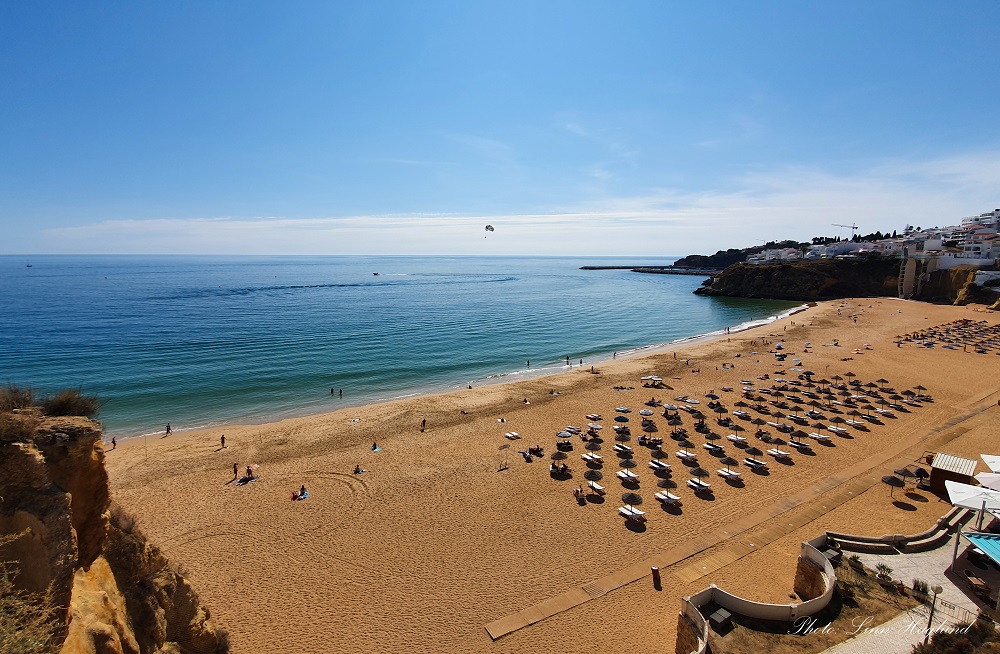
Albufeira is a wonderful destination in January – it’s one of the warmest places in Europe during this month.
While it is famous for its summer vibe, party scene, and beaches, January offers a more tranquil atmosphere and there are still plenty of things to do in Albufeira and its surroundings.
The old town is enchanting with its whitewashed houses, traditional Portuguese churches, and the archaeological museum where you can learn about the area’s prehistoric history until now.
There are also numerous boat tours you can take to discover places like Benagil Cave.
Albufeira has fabulous shopping whether you want to browse through local boutique shops in the old town or you prefer spending the day at one of the nearby shopping malls.
Nearby, you can tour the Ria Formosa Natural Park by boat either from Faro or Olhao in the eastern Algarve or you can hike the Seven Hanging Valleys Trail from Carvoeiro.
January is generally a great month for hiking in the area as the temperatures are milder than other times of the year and there is not much shade.
But there might also rain, so while some days are perfect for beach dwellers to get some winter tan, other days might be best spent shopping, wandering museums, or eating delightful Portuguese food in the old town’s bars and restaurants.
By Linn from Amused by Algarve
Cordoba, Spain

Gorgeous Cordoba is a must-visit in Andalusia.
Cordoba is the city with the highest number of UNESCO-protected sites in the world – it has four World Heritage Sites!
The masterpiece Mezquita-Cathedral is the best-rated historical monument in Europe by travelers.
The historical center has the prettiest allies and the most beautiful courtyards in Spain.
And the food’s worth talking about too.
Rabo de toro (the famous Spanish bull tail stew) and salmorejo (the popular Spanish tomato puree) originate from the city.
Daily temperatures are around 57°F (14°C), making it one of the warmer European destinations in January.
It’s also low season in Cordoba – which means low season comes with lower prices and lesser crowds.
However, the Three King Parades, one of the most famous festivals, happens in January. On January 5th, the streets of the historic Cordoba welcome the arrival of Three Magic Kings of the East on the floats who throw candies to the public.
The Eve of Epiphany is one of the most magical nights in the region!
So, if you are searching for a great place in Europe in January, consider Cordoba, Spain!
By Milijana from World Travel Connector
Best places to visit in Europe in January for snow
Winter sunshine is wonderful, don’t get me wrong.
But for many, pulling on warm clothes and stepping outdoors in chilly weather is what a European winter’s all about.
Personally, I see the charms in both.
From Scandinavia to the Swiss Alps, here are some of the best destinations in Europe for snowy weather, these are the best snowy places in Europe in January!
Oslo, Norway
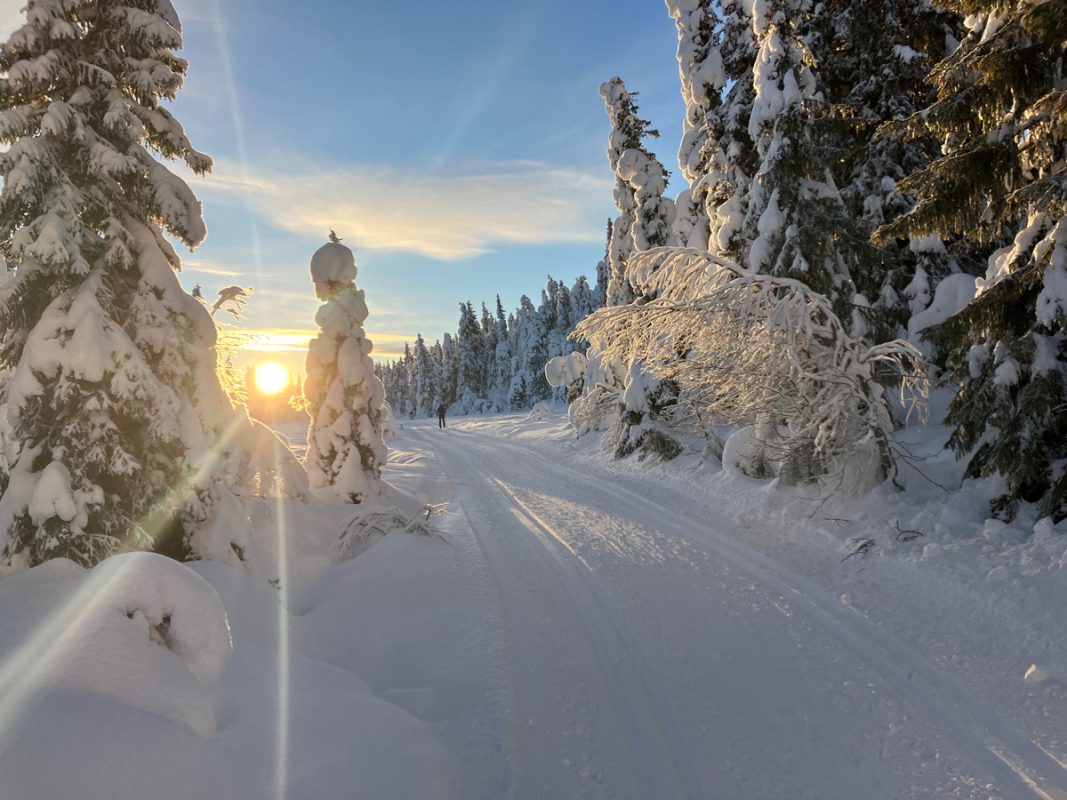
January is one of the coldest months in Oslo, but it is a good time to see snow, try some of the winter activities and visit its museums.
The famous Viking ship museum is closed until 2026, but at Viking Planet, you can learn more about this important period in Norwegian history.
They sailed all over Europe in open ships and even colonised some Scottish islands such as the Hebrides – these were called Scandinavian Scotland!
Another must-visit is the new Munch Museum, which sits right next to the Opera House and has the biggest collection of Edvard Munch pieces in the world.
Or, head to the harbour – close by, you’ll find several floating sauna huts which you can hire.
After warming up in the sauna, take a refreshing dip in the freezing water of the Oslo fjord if you dare!
Due to global warming, snow is unfortunately no longer guaranteed in Osle in winter.
But, even if there is no snow in the city centre, there is nearly always some in the areas outside the city!
From Oslo, you can easily Frognerseren and Tryvann on public transport. At Tryvann you can rent skis and try both downhill and cross-country skiing.
It gets dark early at this time of year, but ski slopes are floodlit.
As are the ice skating rinks in the city centre – at Spikersuppa, which is between the Castle and the Parliament, you can rent skates and test your balance!
The Thief is one of the best places to stay in Oslo, with views out over the Oslo fjord.
A more budget-friendly option is Thon Hotel Rosenkrantz, which is part of a Norwegian hotel chain.
By Kristin from Scotland Less Explored
Zakopane, Poland
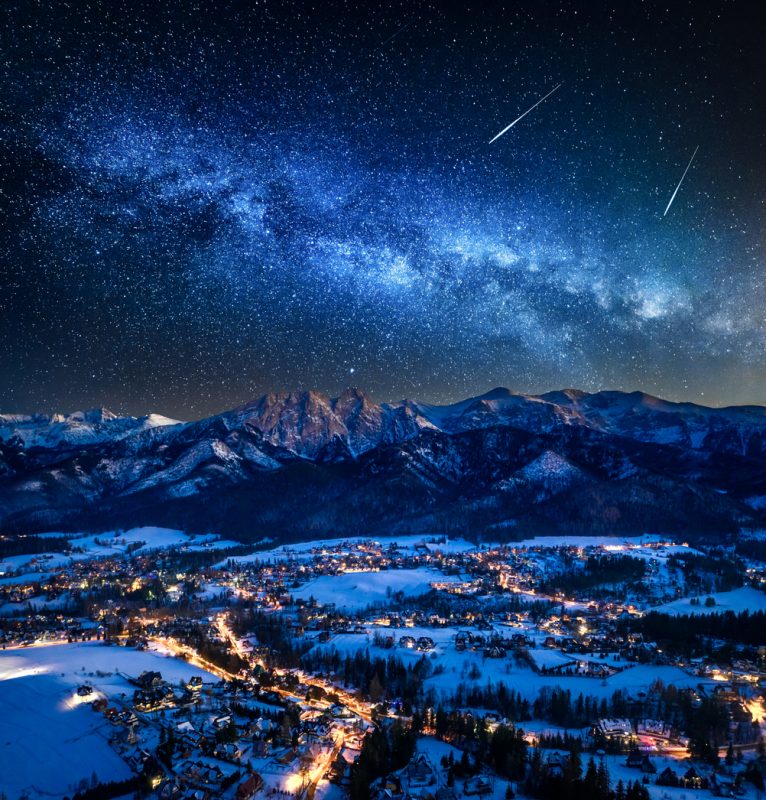
Zakopane, located in the Tatra mountains of southern Poland, is one of Europe’s best destinations for a winter getaway.
If you’re looking to escape the grey skies and cold winter weather of home and experience some unique winter activities, Zakopane should definitely be on your list!
If you’re a winter sports enthusiast then you’ll be in for a treat.
The Zakopane ski resort is the perfect place to hit the slopes, with some of the cheapest skiing prices in Europe!
Whether you’re a beginner or an expert, there are plenty of trails and runs to keep everyone entertained. Just remember to pack some comfortable winter shoes!
For a more laid-back experience, check out Zakopane’s thermal baths. Relax in the warm waters or indulge in one of their therapeutic spa treatments for the ultimate pamper session.
By Lowri from Many Other Roads
Grindelwald, Switzerland

Grindelwald is one of my favourite places in all of Switzerland.
Not to be confused with the Harry Potter franchise’s evil villain in the Fantastic Beasts trilogy, it’s a stunningly beautiful town tucked away in the Swiss mountains.
Christmas is very busy, but in January you’ll find this beautiful resort village a bit quieter and is perfect for some adventure sports: snowshoeing, skiing, snowboarding, cliff walking and sledding.
They have specific sections of the slope dedicated to each form of adventure sports, ensuring that the mountain can be enjoyed by all visitors safely and is perfect for all ages!
Enjoy traditional Swiss hospitality with quaint wooden chalets covered in thick snow and warm mugs of tea, coffee or hot chocolate.
Make sure you walk into town each night for a dinner of cheese fondue, or try some of the famous raclette dinners made with Swiss Alpine cheese and red wine – it’s delicious.
Cosy up by a warm, crackling fire, roast a few marshmallows and watch the night lit up with stars scattered across the sky.
By Adriana from Wanderlicious
Abisko, Sweden
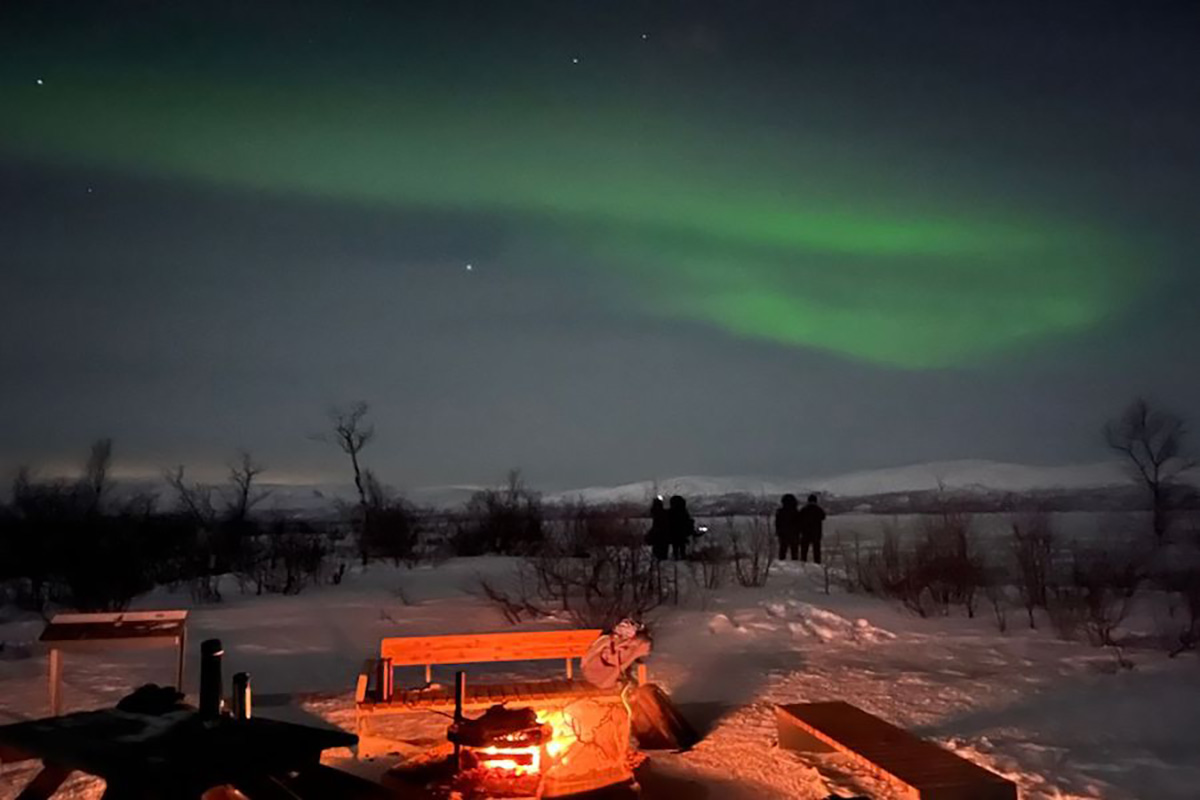
If you’re looking for an adventurous place to visit in January in Europe to enjoy cold weather and (probable!) northern lights, the Swedish Lapland could be the perfect spot.
Located above the Arctic Circle is Abisko, a small town surrounded by the beautiful Abisko National Park.
The national park is full of hiking trails that you can use even in the winter, though you’ll want snowshoes or cross-country skis if there is a lot of recent snow.
Abisko is one of the best places to see the northern lights because it has more clear nights than any of the surrounding areas.
I saw the northern lights almost every night while I was in Abisko – although some nights they were faint!
Stay at the STF Abisko Turiststation, a hotel and hostel within Abisko National Park.
From the Turiststation, you can take tours to see the northern lights, go ice climbing, and try cross-country skiing.
There is also gear available to rent, so you can explore on your own if you prefer.
If you’re at the Turistation on a clear night, you can walk or snowshoe down to the lake and have a bonfire.
Other guests tend to make their way down to the fire, so it’s a great way to meet other travelers.
By Amber from Amber Everywhere
Geneva, Switzerland

Switzerland’s ranking as the third-happiest country in the world according to the World Happiness Report – and it’s even jolly during the dark months of winter!
If you’re into skiing, consider heading to Geneva in January. This is the month blessed with the most snowfall, receiving 108 mm (4.25 inches) of snow, making it the prime time for a skiing adventure.
You’ll find several appealing ski resorts near Geneva Airport, such as Morzine Ski Resort and Les Gets. Morzine, just a 75-minute drive away, offers something for every skier: the Pleney area for beginners, Nyon for those with more experience, and Eagle Park Border for the adventurous freestyle skiers.
Only 60 minutes from Geneva Airport, Les Gets Ski Resort welcomes skiers of all levels with its 110 km of slopes. If you’re traveling with family or need some lessons, Les Gets has plenty to offer, including child-friendly ski lessons.
By Ossama from Awesome Traveler
Tyrol, Austria

The Tyrol region in Austria is known for snow and winter sports in January.
This includes the Kitzbühel ski resort, near Munich in Germany, and the Arlberg ski resort, located in the Oberland, the so-called highlands of Tyrol.
Specifically, Kitzbühel attracts over 60000 visitors on the classic Hahnenkamm downhill skiing race weekend, which is held every year in January.
Celebrities love Tyrol – you might even come across Arnold Schwarzenegger and Bernie Ecclestone at the Hahnenkamm Après ski party!
January is traditionally a snow-filled season and visitors will almost definitely see fresh snowfall in that period.
If you’re a cross-country skiing enthusiast, enjoy accessible kilometer-long tracks leading through forests and undisturbed picture-perfect winter landscapes.
There’s also the option to experience a snowshoe walk on full moon nights!
By Paul D’Souza from Paulmarina
Cappadocia, Turkey
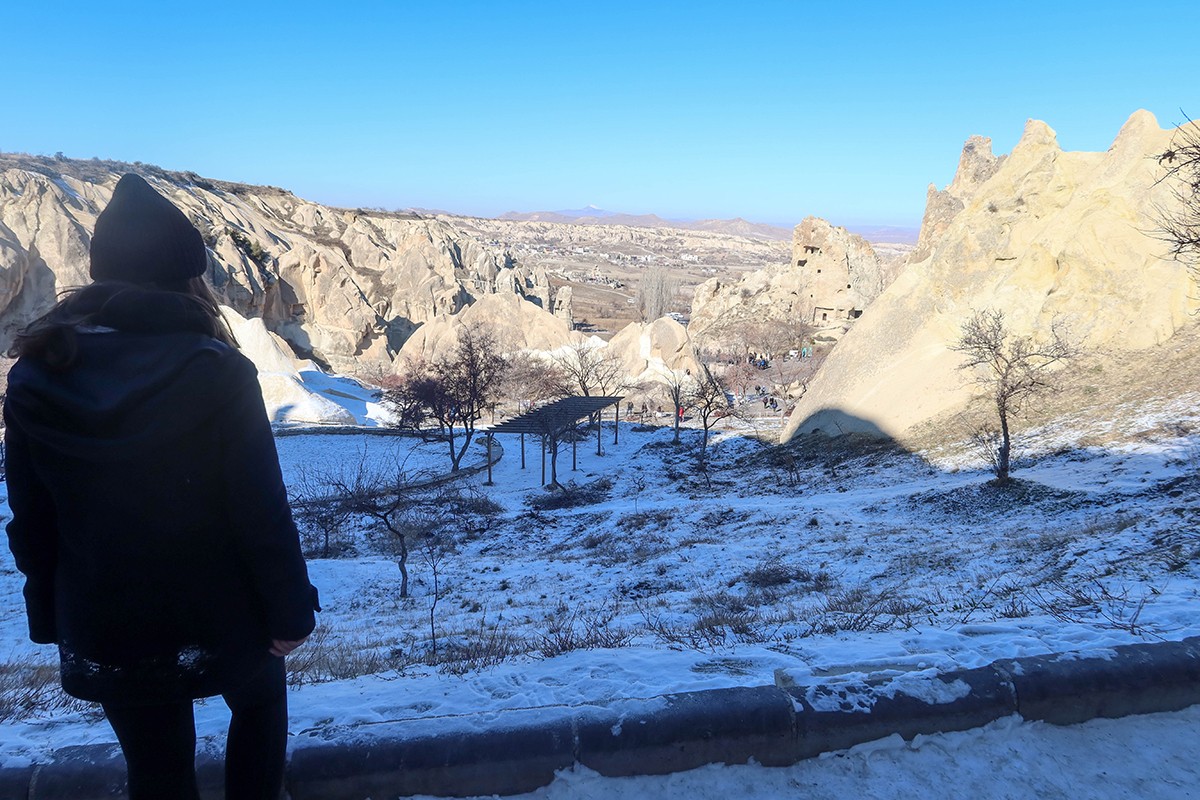
Cappadocia’s famous fairy chimneys and rugged landscapes take on a mesmerizing form in January, as the snow settles upon the peaks and valleys.
The land may be frozen, but it’s still possible to wander through the snow-clad paths of Göreme National Park, a UNESCO World Heritage Site that draws nature lovers year-round.
Winter’s touch on the ancient rock formations creates a surreal visual contrast, as the snow blankets the warm tones of the rocks.
The region’s natural beauty is accessible via guided tours or even on horseback.
The winter season in Cappadocia shouldn’t deter you from one of its signature activities: hot air ballooning – float above the wintry scenes at sunrise, with the golden rays reflecting off the snow, and take in some of the most amazing views in Turkey!
While this activity is weather-dependent, many operators continue to offer tours in January, though it’s wise to confirm availability ahead of time.
Weather not so great? Delve into the region’s history at the Underground City of Derinkuyu.
This subterranean marvel extends several levels below the earth and offers a glimpse into the innovative survival techniques of ancient communities.
There’s plenty of cosy, warming food to enjoy in Cappadocia too.
Testi kebap, a traditional meat and vegetable dish slow-cooked in a clay pot, is particularly satisfying in the cooler weather.
Don’t miss lentil soup too – I ate tonnes of this when I was in Cappadocia in January!
And don’t miss an overnight stay in one of Cappadocia’s cave hotels.
Carved into the region’s soft volcanic rock, these accommodations provide modern comforts within an ancient setting, a cosy retreat after a day of traversing the wintry landscapes.
Average temperatures are low in winter in Cappadocia, and snow is common, although it’s never guaranteed. But it’s still one of the coldest winter destinations in Turkey.
Best places to visit in Europe in January for city breaks
Why do a winter city break in Europe in January?
For one, you’ll enjoy beautiful architecture (let’s be real, most cities in Europe have it!) without the teeming crowds of the summer months.
Less crowds often equals lower prices too, making it an excellent time for budget travellers.
When the tourist crowds disappear, local flavour typically remains in these Europe cities.
Enjoy delicious food without queuing for hours or have a leisurely chat with a bartender about the city.
Here are the best city break destinations in January.
Coimbra, Portugal
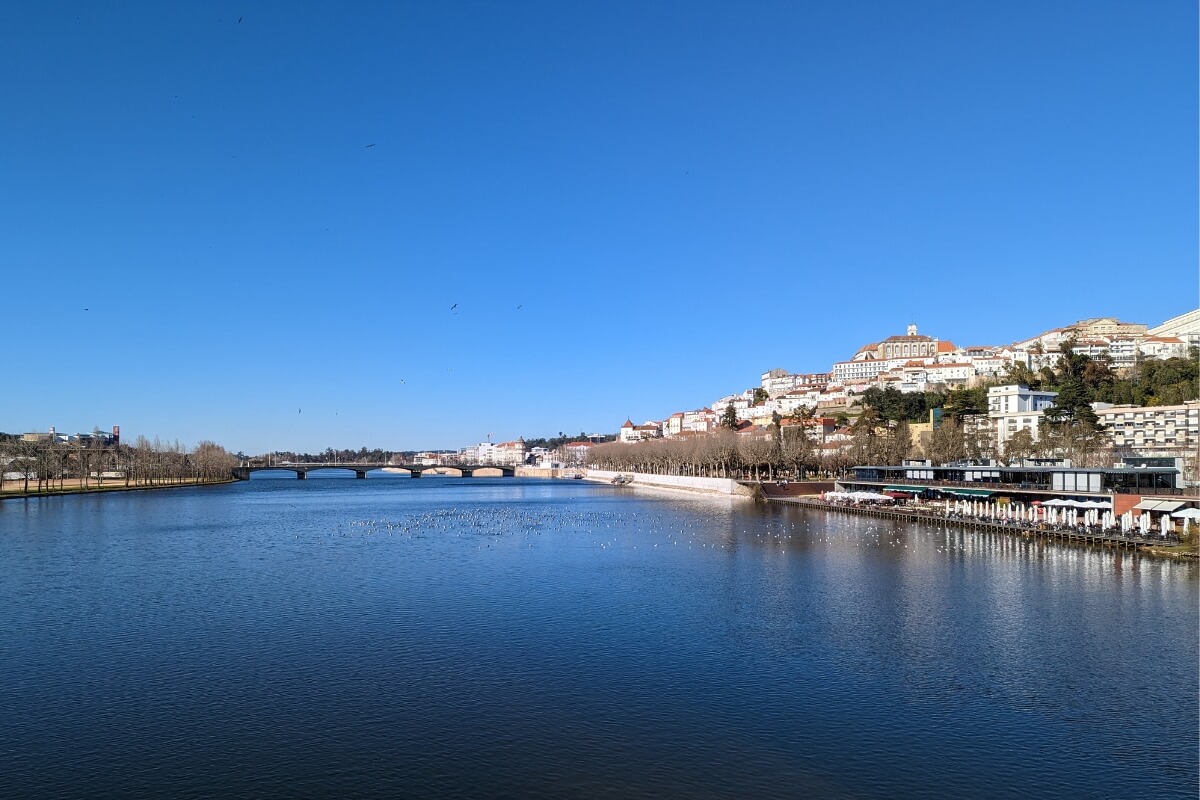
Coimbra is a fantastic destination to kick off your year.
In January, the city receives few tourists and experiences a mild winter climate so you’ll have the opportunity to explore the city’s treasures at your own leisure.
Start your journey by visiting the University of Coimbra, one of the oldest universities in the world.
Wander through its historic buildings and admire the stunning Joanina Library, an architectural gem that’s often considered to be one of the most beautiful libraries in the world.
Another one of the best things to do in Coimbra is visit the Old Cathedral which is where the early kKings of Portugal were crowned. This Romanesque masterpiece offers a serene atmosphere.
In January, don’t miss the Fado ao Centro performances where you can experience the soulful sounds of Coimbra’s traditional Fado music.
The intimate venues and heartfelt performances will leave you with a deep appreciation for this unique art form.
For accommodation, I recommend the Quinta das Lágrimas hotel. This luxurious hotel combines modern comfort with a historic atmopshere and is actually set in the grounds of a former palace. Surrounded by beautiful gardens and located near the old town, it offers a peaceful retreat after a day of exploration.
By Megan from Traveller’s Elixir
Copenhagen, Denmark
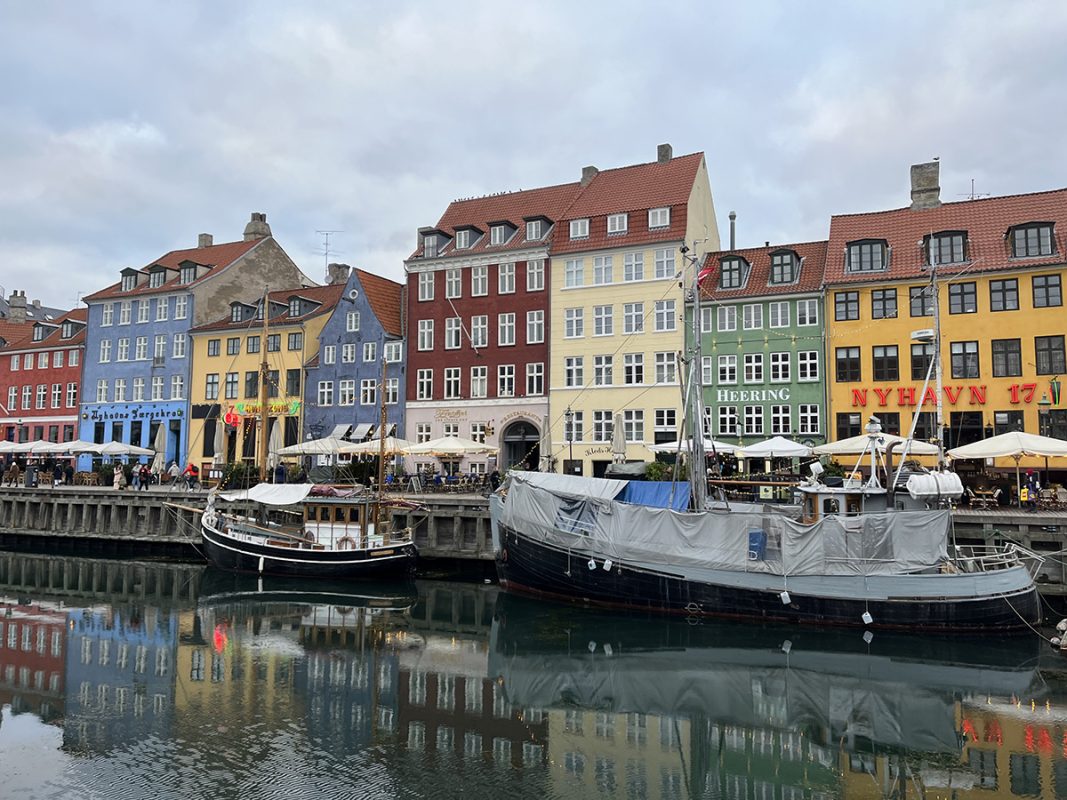
One of the best places to visit in Europe in January is Copenhagen, a European city with plenty of hygge!
The capital city of Denmark is a wonderful place to begin your new year.
The city is pretty cold in January, and there is a chance of snow in Copenhagen at this time of the year.
But it’s Scandinavia – and you can experience it at its most authentic in January, one of the coldest and darkest months of the year!
There are plenty of things to do in Copenhagen in January.
For the first 2-3 weeks or so, Tivoli Gardens are open.
It’s the oldest theme park in the world, and it’s spectacular to spend a day in.
Some people visit Copenhagen for Tivoli alone!
There are also lots of public outdoor ice rinks at this time of year.
Visiting in the winter is cheaper than visiting in the summer – since Copenhagen is so expensive, saving money where possible is a welcome idea!
By Josh from A Backpacker’s World
Wroclaw, Poland
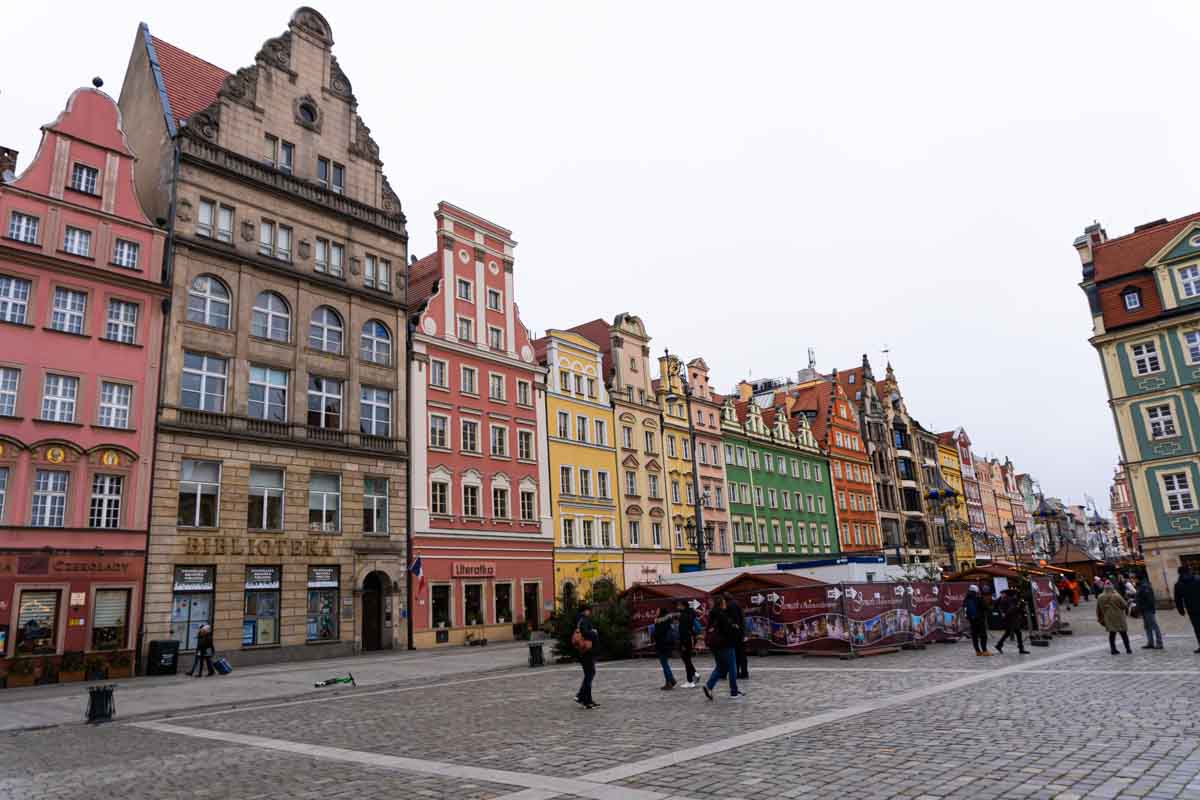
Seeking an enchanting winter getaway?
Look no further than the beautiful city of Wroclaw, Poland, undoubtedly one of the best places to visit in Europe in January.
The city experiences a continental climate, meaning January brings cold temperatures and transforms into a breathtaking winter wonderland with occasional snowfall.
While the festive season officially ends with the New Year, Wroclaw’s Christmas markets still sparkle through early January. You can indulge in seasonal treats and marvel at the festive decorations.
One of the most significant advantages of visiting Wroclaw in January is the reduced number of tourists. With fewer crowds, you’ll have a more intimate experience exploring the city’s attractions, museums, and historic landmarks. Additionally, this off-peak season brings cheaper accommodation rates.
One of the best things to do in Wroclaw is to take a leisurely stroll through the medieval streets of the Old Town, admire the colorful facades, visit the iconic Market Square, and climb St. Elizabeth’s Church tower for breathtaking panoramic views.
Wroclaw is also known for its over 400 dwarf statues scattered throughout its streets. These small, whimsical sculptures add a touch of magic to every corner. Hunting down these charming dwarfs has become famous among visitors and locals
For a comfortable and convenient stay, consider The Monopol, a boutique hotel in Wroclaw’s heart.
By Baia from Red Fedora Diary
Reykjavik, Iceland
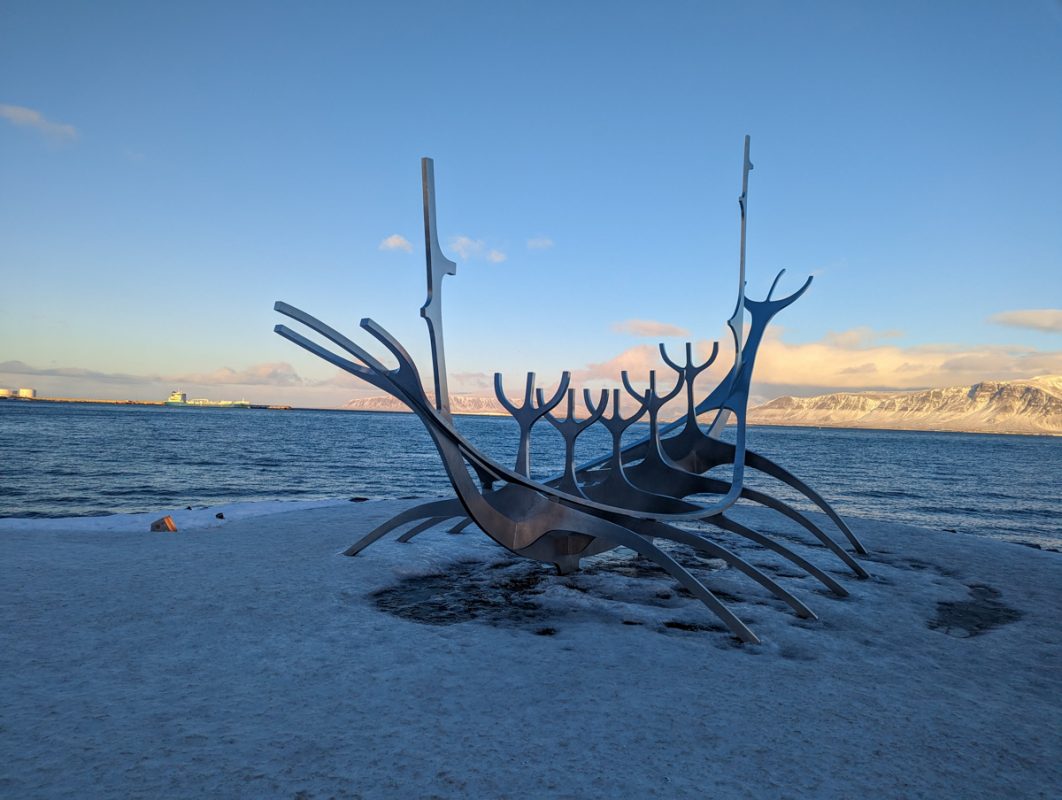
Reykjavik’s January days are short and dark, but the city comes alive with twinkling lights and seasonal festivities.
I visited Reykjavik last January and thought it was the perfect destination to kick off a year of travel.
As the snow gently covers the city streets, the Hallgrímskirkja Church stands tall and glistening.
For those who venture to the top, a panoramic spectacle of the snow-covered rooftops awaits – visit at 10:00 – 11:00 am to enjoy the sunrise.
The famous Winter Lights Festival is a highlight of the season, illuminating the city with dazzling displays, art installations, and events.
One of Reykjavik’s most extraordinary experiences is the chance to witness the Northern Lights.
While sightings are never guaranteed, January’s long nights provide ample opportunity – I saw a fantastic display on my Europe trip!
Restaurants serve hearty traditional dishes like lamb stew and fresh seafood.
And don’t miss the opportunity to warm up in one of the city’s geothermal pools, such as the Blue Lagoon.
Short winter days can be well spent absorbing the rich heritage indoors.
If you’re interested in the history of Iceland, the National Museum offers insights into the country’s unique past, from Viking origins to contemporary culture.
A short drive from Reykjavik, you’ll find the Golden Circle, where geysers erupt, waterfalls flow, and tectonic plates meet – and seeing it in January is even more magnificent.
Snow’s never guaranteed in Reykjavik, but you’ll usually find it in January. If it’s not snowing in Reykjavik, you’ll find it elsewhere in Iceland too!
Also, Iceland’s one of the best European countries to visit from the East Coast of the USA – you can easily do a city break to Reykjavik from New York or Boston!
Lisbon, Portugal
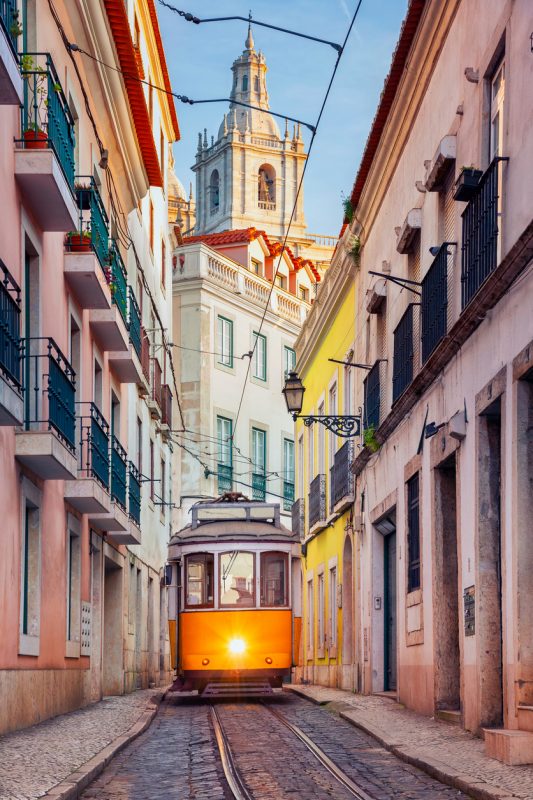
As cold weather embraces most of Europe, Lisbon basks in a milder winter climate.
The River Tagus glimmers in winter sunlight; the thermometer generally hovers around 15°C/ 59°F – it rarely drops below 10°C (50°F) and it barely ever snows.
January brings a festive spirit to the city.
Kings Day, celebrated on January 6th, fills the streets with joyful parades, traditional music, and sumptuous feasts.
On this day, families come together to exchange gifts, keeping alive a cherished tradition that tourists are welcome to experience.
There’s plenty to do in Lisbon in January outside of King’s Day, too.
History aficionados will find pleasure in visiting the Jerónimos Monastery and the Belém Tower, both boasting architectural brilliance from the past, yet without the usual crowds.
Want to try some Portuguese food?
There’s plenty on offer in the winter – delve into the flavors of Portuguese cuisine, from savoring the fresh seafood at Mercado da Ribeira to indulging in the famous pastéis de nata at pasteis de Belem – where they were created.
For art enthusiasts, the Berardo Collection Museum awaits, displaying some of Europe’s finest modern and contemporary art, while the Gulbenkian Museum offers a broader collection from various epochs.
The capital’s definitely one of the best Portugal winter destinations!
Best places to visit in Europe in January for extended Christmas
In some destinations, festive cheer prevails.
Orthodox countries, like Serbia and Georgia, don’t actually celebrate their Christmas until 7th January, whereas Spain commemorates Three Kings Day on 6th (the Three Kings are like the Spanish version of Santa Claus!).
Other places, like the Orkneys and Shetlands in Scotland, still
So if you’ve not quite had your fill of Christmas just yet, book a ticket to one of these destinations!
Belgrade, Serbia
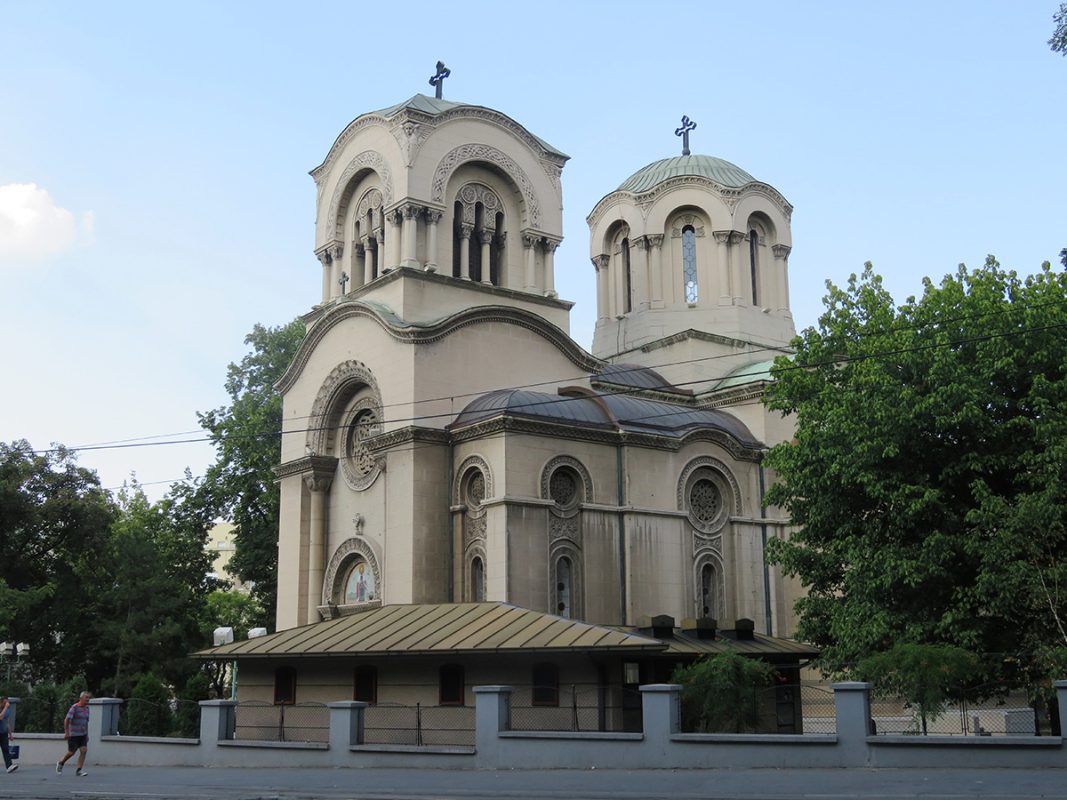
Belgrade, the capital city of Serbia, is a wonderful city to visit in January.
It can be quite cold during that time, with temperatures ranging from around -5°C to 5°C (23°F to 41°F).
But, if you enjoy winter activities, cultural events, and experiencing a different side of the city with fewer tourists, Belgrade in January’s ideal.
In January, Belgrade is often covered in snow, creating a picturesque landscape.
The atmospheric conditions can enhance the beauty of historic sites, such as the Sava Cathedral, the Belgrade Fortress and the Kalemegdan Park.
But it is not only the snowy winter wonderland that makes Belgrade a great city to visit in January. January is also a festive month.
Experience the Serbian Orthodox Christmas celebrations, which typically take place on January 7th as well as the Serbian New Year which is usually mid-January.
The city is adorned with lights and decorations, and there are often traditional performances, music, and festive markets.
January is considered the off-peak tourist season in Belgrade.
This means you can explore the city’s attractions without dealing with large crowds, and hotel rates and airfare tend to be more affordable during this time.
By Ellis from Backpack Adventures
Tbilisi, Georgia

For an alternative European getaway in January, consider Tbilisi. The capital of Georgia in the Caucasus, Tbilisi has a fairly mild winter climate – temperatures rarely dip below freezing, and rain/snow is rare.
As an Orthodox country, Georgia celebrates Christmas and New Year in early January.
Festivities – including light displays and pop-up souvenir and food markets – kick off in mid-December and run until Epiphany.
One of the highlights of this period is the Alilo, a traditional procession that takes over the streets of Tbilisi on Orthodox Christmas Day.
January is associated with several special Georgian dishes including gozniaki, a sweet hazelnut brittle.
When visiting Tbilisi in January, be sure to book a private room at the sulphur baths.
Immersing yourself in the naturally warm, mineral-rich waters – and indulging in a hammam-style scrub down called a kisi – is a Tbilisi tradition.
A Georgian wine tasting at one of the city’s many bars is the perfect way to while away a chilly winter’s eve, and for active travellers, January is the ideal time to get out into the hills around the city and explore one of Tbilisi’s urban hiking trails.
By Emily from Wander-Lush
Orkney Islands, Scotland

Surrounded by the North Sea, Norwegian Sea and Atlantic Ocean, the Orkney Islands are home to mountainous landscapes, sweeping beaches, ancient history and charming towns.
Located off the top of mainland Scotland, United Kingdom, Orkney is an archipelago of 70 islands, although only 20 are inhabited.
Whilst the weather is wilder in the winter months, January is the perfect time to immerse in a peaceful retreat in the rugged Scottish countryside.
Nature lovers have many hilly hikes and coastal walks to choose from. Orkney is one of the best places to see cetaceans in Scotland and orcas, dolphins, porpoises and migratory whales are often spotted off coastal paths.
Another of Orkney’s highlights is its ancient historical sites. Known as the Heart of Neolithic Orkney, UNESCO World Heritage Sites on Mainland include the Ring of Brodgar, Standing Stones of Stenness, chambered cairn Maeshowe and Skara Brae, Europe’s best preserved Neolithic village.
While Ness Battery and the shipwrecks of Scapa Flow are home to more recent stories from the World Wars.
Other adventures include island hopping by boat, visiting the sea stack known as the Old Man of Hoy, taking the shortest flight in the world and even catching the elusive Northern Lights.
Visitors who decide to see in the New Year can celebrate Hogmanay (the last day of the old year) in one of Orkney’s many local pubs.
But the real fiesta happens on the first day of January, when the traditional street ball game, known as the Ba’, is played annually in Kirkwall in front of St Magnus Cathedral.
By Lucy and Dan from Throughly Travel
(Editor’s note: While in the Orkneys, you could also pop over the neighbouring Shetland Islands. On the last Tuesday in January each year, there’s a festival called Up Helly Aa which is a fire festival that symbolises the end of Yule. I’m planning on going in 2024!).
Rome, Italy

Although it is a favorite destination throughout the year, Rome takes on a truly special atmosphere only in January.
The Italian tradition of Christmas festivities dictates that they begin on December 8 and end on January 6th.
The closing date coincides with the holiday of Epiphany.
In Italy, especially in Rome, on the evening between January 5 and 6, children leave a glass of milk and a cup of espresso coffee by the stove to offer to Befana, the Italian Christmas witch.
She will visit homes at night and leave children with sweets – or coal if they have been too mischievous during the year!
January 6th is a national holiday, and on that date and the following days, Roman families gather in Piazza Navona to celebrate Befana.
Piazza Navona is the most beautiful square in Rome, decorated with Baroque fountains, churches, and palaces.
On this occasion, the square hosts merry-go-rounds and a candy and handicraft market, while women dressed as the Befana wander around joking with children.
There are also street performers, which only lend to the exhilarating atmosphere.
January’s also a low-season month in Rome, so its world-famous attractions will be much quieter!
After January 6th, the sale season begins in Rome – this continues throughout the month.
If you love to shop, January’s the perfect month to visit Rome and get some real bargains without the usual crowds!
By Annalisa from Travel Connect Experience
FAQs about visiting Europe in January
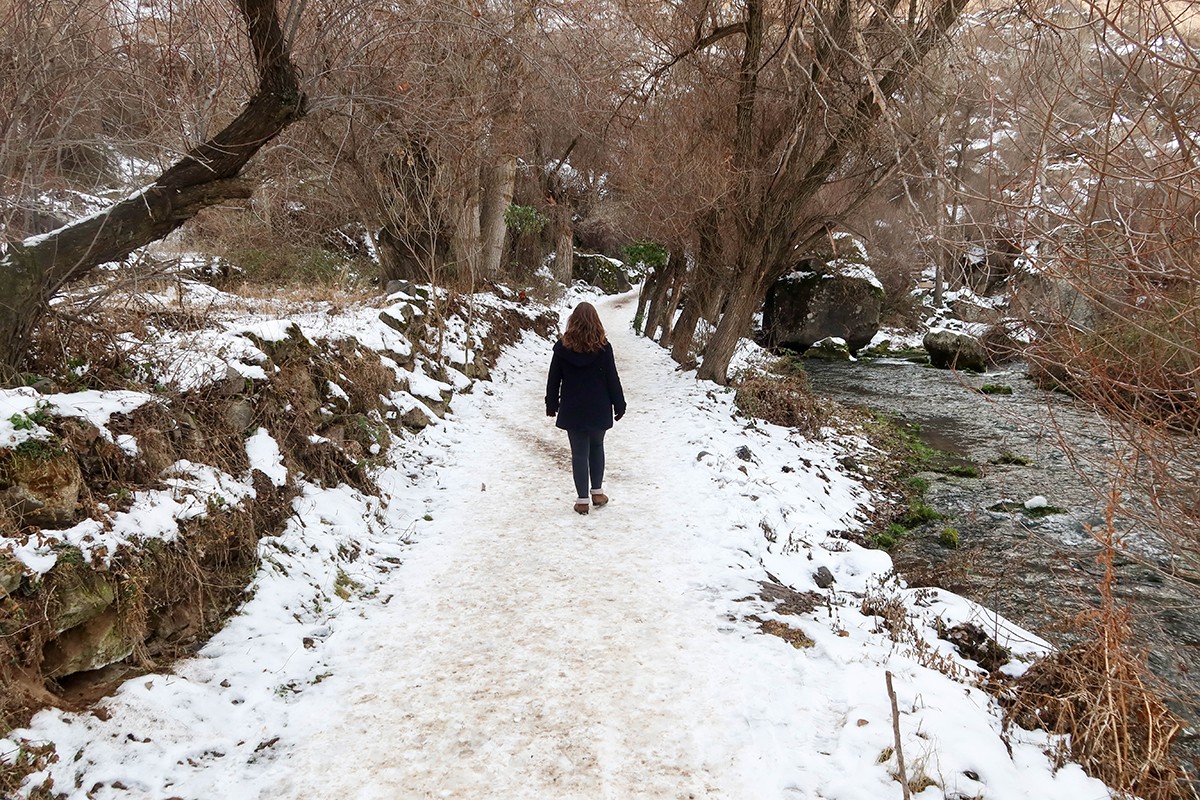
Where in Europe is the warmest in January?
The warmest places in Europe during January are typically found in the southern regions.
Destinations such as the Canary Islands, Malta, and southern parts of Spain and Portugal offer milder temperatures and a chance for some winter sun.
Is January a good time to visit Europe?
January can be a fantastic time to visit Europe, depending on what you’re seeking.
Winter sports enthusiasts may find the snow-capped mountains ideal for skiing, while those looking for quieter city experiences will appreciate the reduced crowds in many popular destinations.
Where is nice to go in January in Europe?
From winter festivals in Reykjavik to skiing in the Alps, exploring historic sites in Rome without the crowds, or enjoying milder weather in places like Barcelona and Athens, there’s a variety of experiences to choose from in Europe in January.
Is it too cold to visit Europe in January?
While northern and central parts of Europe can be quite cold in January, you’ll be fine if you bring the right clothes (take it from me – I went on a winter trip to Iceland!).
Southern Europe has milder temperatures, making it suitable for those who prefer less chilly conditions.
Which country is the best time to visit in January?
The “best” country to visit in January depends on your interests.!
Skiers and snowboarders might prefer Switzerland or Austria, but if you’re seeking winter sun, you could head to Spain’s Canary Islands or the Greek Islands.
Is January high season in Europe?
Generally, January’s low season in many European destinations, particularly in cities and beaches known for their summer tourism.
However, some winter sports destinations, such as the French Alps, are in the swing of high season!
What country is hot and cheap in January?
If you’re seeking warmth and affordability in January, destinations like Portugal’s Algarve region, Spain’s Costa del Sol, or some areas in Greece are ideal.
These locations bask in mild weather and can be more budget-friendly during the winter months!
Are you ready for Europe in January?

The colder months certainly don’t all have to be spent indoors, and whether you want to explore the rich history of Europe’s cities, take in stunning views from the Alps’ ski slopes or retreat to the south for stunning beaches bathed in a little sunlight, Europe in January delivers.

